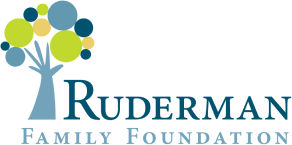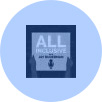
Through The Disability Lens
[:en]
By: Elizabeth Zwick
This post originally appeared on the Associated Grant Makers website
As funders, we have carefully considered the target populations we wish to impact: we target one or more groups of people whose lives we seek to improve and we have identified desirable ‘outcomes’ for these groups. Our understanding of these target populations has great influence on how we conduct our partnerships, grant making and related activities.
Through AGM, I am working with a small group of disability funders to raise awareness of disability issues among our colleagues in the larger funding community. According to the U.S. census approximately 20% of the population has some kind of a disability. Therefore people with disabilities are present in all philanthropic target populations– but my colleagues and I have observed that sometimes they remain invisible and consequently underserved.
We also have observed that when funders reconsider their target populations through a disability lens, underserved people with disabilities shift more clearly into view. Project adjustments then can be made—often even minor accommodations are all that is needed– and a portion of the target population is reached more effectively. Overall outcomes improve, sometimes dramatically. A couple of examples will demonstrate how this works.
Consider the issue of homelessness. Several years ago the Melville Charitable Trust considered their priority issue of homelessness with a disability lens, shifting their understanding of the target population. The Trust learned that many homeless people are also people with disabilities, often with the relatively invisible disability of mental illness. Programmatic approaches shifted in response, and outcomes eventually improved. Designing programs that take disability and particularly mental illness into account allowed the Trust to be much more effective. In fact, federal legislation was sought and eventually won to build low-income housing for people with disabilities: the Frank Melville Supportive Housing Investment Act of 2010.
One of the major lessons the Melville Charitable Trust posts on its website is that “providing housing with support services to those who have enduring disabilities is the smart, humane, cost-effective solution to long-term homelessness”. The Trust did not start with disability as a funding priority, but using a disability lens allowed them to effectively address their core mission.
Of course, there are many kinds of disabilities. The invisibility of some makes them easy to miss in our grant-funded programs. These invisible disabilities include not only mental illness but also many kinds of learning disabilities.
The president of a major workforce development organization told me that looking at the young people they serve with a disability lens motivated program changes leading to greater effectiveness. This organization offers a hybrid program of vocational training and a High School Equivalency Test (HiSET) program. Students were struggling with the academic portion of the program until staff realized that a high percentage had undiagnosed learning disabilities. When the curriculum was adjusted to address learning disabilities, students were more successful and program outcomes improved.
I hear that many other workforce development programs have made the same observation and undertaken similar adjustments. This suggests that undiagnosed learning disabilities may be one of the major contributors to the high dropout and unemployment rate among some populations of young people. I believe this is now widely acknowledged among workforce development professional and funders, but it was not always the case.
In their 2006 book Effective Philanthropy, Mary Ellen Capek and Molly Mead argue against generic funding approaches that do not take into account the full range of diversities in a philanthropic target population. They present especially compelling evidence that using a gender lens almost always makes grant-funded program interventions more effective. Capek and Mead mention disability as another important category of funding analysis, alongside race/ethnicity, socioeconomic class, age, nationality or immigration status, religion, and sexual orientation. They point out that the very exercise of trying on these different lenses automatically moves any foundation closer to the ideal of a true learning organization.
My colleagues and I believe it is well worth the effort to try out the disability lens and see what happens. We have seen program outcomes improve when funders ask, “Are we taking into full account the disabilities that people in our target group may have? If we are not, do they need additional accommodations or services to be reached as effectively as people without disabilities? Does recognizing their existence change our understanding of the social problem we seek to ameliorate?”
So… Have you looked at your target population with a disability lens? If so, what have you learned? We’d love to hear about your experience with this relatively easy tool.[:he]
By: Elizabeth Zwick
This post originally appeared on the Associated Grant Makers website
As funders, we have carefully considered the target populations we wish to impact: we target one or more groups of people whose lives we seek to improve and we have identified desirable ‘outcomes’ for these groups. Our understanding of these target populations has great influence on how we conduct our partnerships, grant making and related activities.
Through AGM, I am working with a small group of disability funders to raise awareness of disability issues among our colleagues in the larger funding community. According to the U.S. census approximately 20% of the population has some kind of a disability. Therefore people with disabilities are present in all philanthropic target populations– but my colleagues and I have observed that sometimes they remain invisible and consequently underserved.
We also have observed that when funders reconsider their target populations through a disability lens, underserved people with disabilities shift more clearly into view. Project adjustments then can be made—often even minor accommodations are all that is needed– and a portion of the target population is reached more effectively. Overall outcomes improve, sometimes dramatically. A couple of examples will demonstrate how this works.
Consider the issue of homelessness. Several years ago the Melville Charitable Trust considered their priority issue of homelessness with a disability lens, shifting their understanding of the target population. The Trust learned that many homeless people are also people with disabilities, often with the relatively invisible disability of mental illness. Programmatic approaches shifted in response, and outcomes eventually improved. Designing programs that take disability and particularly mental illness into account allowed the Trust to be much more effective. In fact, federal legislation was sought and eventually won to build low-income housing for people with disabilities: the Frank Melville Supportive Housing Investment Act of 2010.
One of the major lessons the Melville Charitable Trust posts on its website is that “providing housing with support services to those who have enduring disabilities is the smart, humane, cost-effective solution to long-term homelessness”. The Trust did not start with disability as a funding priority, but using a disability lens allowed them to effectively address their core mission.
Of course, there are many kinds of disabilities. The invisibility of some makes them easy to miss in our grant-funded programs. These invisible disabilities include not only mental illness but also many kinds of learning disabilities.
The president of a major workforce development organization told me that looking at the young people they serve with a disability lens motivated program changes leading to greater effectiveness. This organization offers a hybrid program of vocational training and a High School Equivalency Test (HiSET) program. Students were struggling with the academic portion of the program until staff realized that a high percentage had undiagnosed learning disabilities. When the curriculum was adjusted to address learning disabilities, students were more successful and program outcomes improved.
I hear that many other workforce development programs have made the same observation and undertaken similar adjustments. This suggests that undiagnosed learning disabilities may be one of the major contributors to the high dropout and unemployment rate among some populations of young people. I believe this is now widely acknowledged among workforce development professional and funders, but it was not always the case.
In their 2006 book Effective Philanthropy, Mary Ellen Capek and Molly Mead argue against generic funding approaches that do not take into account the full range of diversities in a philanthropic target population. They present especially compelling evidence that using a gender lens almost always makes grant-funded program interventions more effective. Capek and Mead mention disability as another important category of funding analysis, alongside race/ethnicity, socioeconomic class, age, nationality or immigration status, religion, and sexual orientation. They point out that the very exercise of trying on these different lenses automatically moves any foundation closer to the ideal of a true learning organization.
My colleagues and I believe it is well worth the effort to try out the disability lens and see what happens. We have seen program outcomes improve when funders ask, “Are we taking into full account the disabilities that people in our target group may have? If we are not, do they need additional accommodations or services to be reached as effectively as people without disabilities? Does recognizing their existence change our understanding of the social problem we seek to ameliorate?”
So… Have you looked at your target population with a disability lens? If so, what have you learned? We’d love to hear about your experience with this relatively easy tool.
[:]
About the author Elizabeth is the senior program officer for the Ruderman Family Foundation.
Stay Included
To stay up to date on our most recent advocacy efforts, events and exciting developments, subscribe to our newsletter and blog!




















